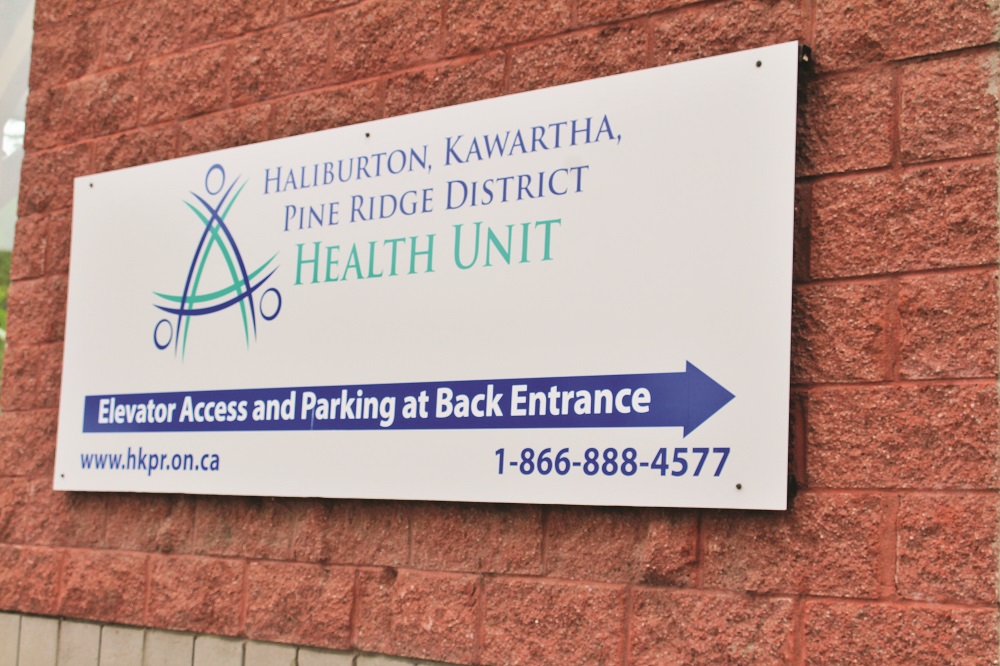By Kirk Winter
Despite priority being given to battling the COVID-19 pandemic, the Haliburton Kawartha Pine Ridge District Health Unit is meeting its other mandates of providing essential Ontario public health programming.
Acting medical officer of health, Dr. Ian Gemmill, told the March 18 board meeting that, “Although approximately 80 per cent of the staff at the HKPRDHU are fully engaged in pandemic response, there are essential services that local public health agencies provide that must continue regardless. Many programs continue to operate.”
These programs include:
• Providing support to the harm reduction response, including naloxone distribution, needle exchange and opioid surveillance.
• Working on mental health promotion as well as supports related to infection protection and control needs and assessments within schools, in addition to COVID-19 related case and contact management.
• Providing support to parents and guardians through the Healthy Babies program.
• Monitoring for influenza activity.
• Conducting routine inspection of food premises and personal services settings.
• Preparing for flood season, for an increase in the establishment of outdoor patios, and the opening of seasonal facilities including trailer parks, marinas, golf courses and beaches.
• Planning for tick surveillance activities.
• Conducting case and contact management for sexually transmitted infections.
• Providing emergency services to sexual health clinics.
• Following up on adverse events following immunizations.
Dr. Gemmill also shared that the initial phase of the launch of a new collaborative health record (CHR) system, Click and Connect, for the HKPRDHU went live March 8.
“The new system focuses on improving the exchange of information between local residents and COVID-19 Call Centre staff during this pandemic. People can visit the HKPRDHU website to submit their COVID-19 questions to staff. Anyone with a commonly-asked question will be provided information and links to additional resources, while those submitting other questions will receive responses directly from other health unit staff. Click and Connect is a safe, secure way for people to reach the health unit … and helps streamline inquires so staff can respond quickly,” Gemmill said.
He added that after the pandemic, the system will be expanded to improve access to other programs and services.
Health board hears immunization plan
COVID-19 immunization rates at Haliburton County facilities are universally high with 100 per cent of residents at Extendicare Haliburton, 96.6 per cent at Highland Wood and 91.1 per cent at Hyland Crest having received at least their first dose of vaccine, health unit manager of health promotion, Lorna McCleary, told the board.
McCleary and Marianne Rock, manager of health protection, said in phase one the priority has been vaccinating the most vulnerable. Those groups included residents, staff and essential caregivers at long-term care homes and retirement homes, health care workers including paramedics, Indigenous adults living on-reserve and individuals receiving home care.
The next phase, adults 80 and older, staff, residents and caregivers in other congregate settings for seniors such as assisted living, is underway.
To ensure the vaccination program is as widespread as possible, HKPRDHU is partnering with area hospitals, primary care medical doctors, pharmacists and municipalities to host mass immunization clinics.
In Haliburton County, they’ll use the S.G. Nesbitt Memorial Arena in Minden and the A.J. LaRue Arena in Haliburton.
“Supply of vaccine will remain limited over the next few weeks,” McCleary and Rock said, “We are looking at about 5,000 doses a week being available. We will follow the provincial direction for eligibility over time. The provincial goal is to have all adults immunized with the first dose by the end of June with the second dose coming in the summer of 2021.”
In phase two, running from April to July, priority will be given to older adults 65-79, people who live and work in high-risk congregate settings, essential frontline workers who cannot work from home, individuals with high-risk chronic conditions, and communities at risk.





